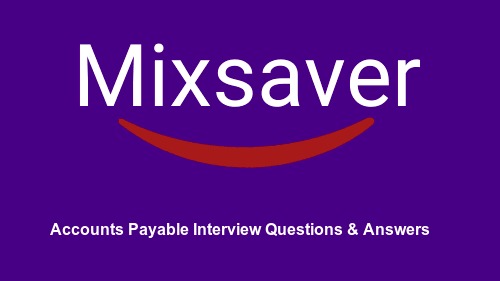1. What is the difference between billable and non-billable expenses?
Billable expenses are the expenses incurred by you on behalf of your customer in performing duties / service and supply. These expenses are recoverable from your customer by way of billing.
Non-billable expenses are the expenses incurred by you for carry out your own business / duties and responsibilities.
2. What steps would you take before approving an invoice for payment?
Following steps should be taken...
? Validate the invoice once it is matched for checking any holds...
? If the workflow is implemented, initiate approval for the invoice. Once the invoice is approved/Approval not required(status in case WF is not implemented) you can go for payments.
? Create accounting after approval of invoice...
Finally, for payments, u need to format, build.
3. What is the meaning of invoice?
An invoice is a statement that contains the under-mentioned details compulsorily.
1. Invoice Number
2. Invoice date
3. Name and address of the person
Name and address of the person to whom the invoice is made. ( Buyer of goods and service)
5. Description of goods/services involved
6. Applicable rates and taxes with percentages
7. Rate of the goods/services
Quantity of the goods and services
9. Quality or any other specifications
10. Price / Value of the goods and services
11. Invoice must be signed by the person making it
12. Terms and conditions of making the payment
4. What procedure for excess payment to supplier I would like know without adjusting invoice that means how the supplier will send back excess amount how do in oracle apps?
Excess payment to supplier is treated as Advance paid to the supplier. This will show as debit balance in the supplier account.
The supplier can send the payment by way of cheque/demand draft without adjusting in his subsequent bills.
5. What is the difference between Consignor and Consignee?
The consignor is the person who is the owner of the goods and who delivers the goods to the consignee.
The consignee is the person who receives the goods and he just possesses the goods and not the owner.
6. What is the difference between SAP MEMORY and ABAP MEMORY?
SAP Memory: Global, user-related memory that extends beyond transaction limits. Access to the SAP memory is via SPA/GPA parameters.
ABAP Memory: Memory area within each main session, which can be accessed by programs using the EXPORT and IMPORT statements and which remains available using a series of program calls (call sequence).
7. How is a PO (Purchase order created)?
A document or form used by a customer to issue an order for goods or services.
I want notes on
1. Procure to pay cycle with accounting entries
2. order to cash
3. record to report
4. Sox
8. How does the payment mechanism work?
The open items of an account can only be cleared once you post an identical offsetting amount to the account. In other words, the balance of the items assigned to each other must equal zero. During clearing, the system enters a clearing document number and the clearing date in these items. In this way, invoices in a vendor account are indicated as paid, and items in a bank clearing account are indicated as cleared.
You generally use the payment program to clear invoices. Manual clearing of open items is therefore not usually necessary. However, you will sometimes have to clear items manually if, for example, you receive a refund from your vendor or you have set up a direct debit procedure.
9. What do you understand by Open Item Managed Account?
Open item management ensures that all items that have not yet been cleared are available in the system. Only after every open item in a document is cleared can a document be archived.
10. What do you mean by WCC?
Winter compensation from contributions.
11. What is an IFA?
Institute of finance & accounts
12. What do you understand by Intercompany Settlement?
A key functional area of SAP for Utilities that supports cross-company exchange of settlement data based on international standards such as EDI, XML, and Microsoft Excel.
Intercompany data exchange manages data transfer between retailers, distributors, and independent service operators with special regard to the requirements in deregulated markets.
13. What is FBT (Fringe Benefit Tax)?
The tax payable on a non-salary benefit provided to an employee or an associate of the employee. The employer is liable to pay any FBT and may choose to recover the FBT amount from the employee.
14. What is debit and credit from the bank's point of view?
Credit what comes in
Debit what goes out
15. What is meant by liabilities?
Liabilities are what all u owe from the bank on notes payable or in other words it is:
Liability=Asset-Owners equity
What the company owes is a liability. Liability = Asset-capital





